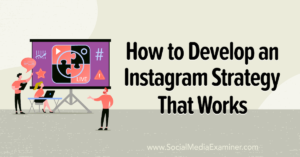The digital out-of-home landscape is continuously reinventing itself and looking for new avenues for growth in the post-COVID era. In fact, programmatic digital out-of-home DOOH (pDOOH) has become more relevant now than ever in the new normal, and it will be a crucial component for advertising and marketing activities in 2022 and beyond. With dynamic DOOH content that can adjust to triggers like weather, traffic, store-level inventory data, and more, there’s a great deal of untapped programmatic potential for marketers to explore.
“When I first saw digital billboards in India, I wondered why couldn’t these screens be integrated within the digital ecosystem and were being operated in isolation much like the static boards? The underutilisation of an asset with so many merits for marketers and screen owners needed a platform that could make use of the full potential of this medium that was only going to scale in the future,” recalls Gulab Patil, Founder and CEO, Lemma.
An engineer by education and one of the pioneers in the pDOOH space globally, Gulab worked in multiple fields before discovering his passion for digital and advertising technologies. “Always intrigued and excited about emerging media and trends, I enjoyed a challenge that could bring about a change within the existing media spectrum,” he says.
Pioneer in programmatic DOOH
Since its inception in 2017, Lemma has played a significant role in educating advertisers in programmatic DOOH–a concept alien to most marketers, and as an industry leader now, it has decoded the much-dreaded concept of pDOOH, making it simple to understand and easy to execute.
“My vision of transforming DOOH into a true digital medium wasn’t limited to executing ads alone but bringing about the real transformation in all aspects, especially trust, transparency, data, and measurement in the DOOH space,” he adds.
Lemma boasts of being the industry-first to have done brand lift studies for DOOH (much like how digital media is evaluated today). Now, brands believe in the outcome basis the studies conducted and continue to invest in DOOH as a medium, especially digital-first brands which are now warming up to programmatic DOOH as an effective digital media.
Digital out of home ads are also more than mere exposures. When rendered strategically, these ads can drive users to take action and escalate the overall impact of every exposure. In fact, a 2020 Nielsen report on DOOH highlights that on an avg. 52% of the people notice DOOH ads almost all the time or most of the times, and this is true across all forms of Digital out of home screens.
“Modern marketers understand that audience buying is what makes or breaks a campaign across any medium and introducing this feature in a mass media like digital out of home has been our core competency,” Gulab points out.
This change has opened a whole new opportunity for multiple DOOH stakeholders, as spends are being roped in from the digital media spends pie as well. Digital-first brands can now explore a new avenue for their ads, while complementing their overall digital strategy.
“Lemma has delivered many firsts to industry campaigns. The success of being able to get digital media agencies and brands to spend on DOOH is an accomplishment worth a mention. A medium that has been in existence for over decades is finally being used to its full potential, making it truly digital,” says a proud Gulab.
What makes pDOOH a compelling medium?
The sheer size of the medium makes an impact on the audience. Digital out of home is a non-intrusive medium that delivers ads like web or mobile but without any disruption. Now with programmatic capabilities, DOOH can deliver ads in context to variables like audience interest, time, weather, pollution levels and so much more. Brands can deliver impact using both static and video creatives too.
According to Gulab, the medium is set to scale up given the increasing number of smart cities cropping up in various parts of the world. The successful integration with leading demand side platforms has enabled brands the access to over 200K screens globally and has provided media owners a direct connection with multiple global advertisers, growing revenue, and improving fill rates. “DOOH screens will be the primary medium of urban outdoor communication and this will also give brands the opportunity to display content to the audiences at the right time and in the right context,” he predicts.
Factors like audience buying, contextual and real-time ad execution mapped to variables and real-time triggers, the ability to change creatives on the fly, opportunity to adapt campaign budgets and optimise screens individually, and lastly, the ability to measure the campaign and ad impact are reasons enough for any brand to want to upgrade their media mix.
“Programmatic DOOH will be the only way to transact in DOOH as more and more stakeholders choose this medium. With technology so advanced, brands can simulcast live events on DOOH screens to engage with the mobile disengaged audiences and even retarget CTV audiences in the set out locality , giving them the opportunity to deploy omni-digital strategies in its true sense,” says Gulab.
“The potential of DOOH to keep up with times and changing technology is the most compelling aspect about this medium,” he adds.
The road ahead
Going forward, integration of DOOH in omni-channel media plans and 360-degree campaigns will form the foundation for its growth. The key lies in the right strategy and an open mind. “Like with any other medium, it takes time for brands to adapt their creativity to suit the medium. While the medium is ready, the creatives not so much. Like with digital when brands used the same TVC on digital but now realise the importance of made for web content. A similar level of understanding is also required for programmatic DOOH where brands need to make content more suitable both for the audiences and the medium itself,” explains Gulab.
Furthermore, he feels that data standardisation is the need of the hour. Audience insight like footfall, consumption of specific product categories, brand affinity, purchasing power etc have a higher success rate for a brand’s desired audience. Therefore, data standardisation and definition of usage protocols are pressing priorities. While bringing such standardisation, enhanced data privacy for consumers should also be maintained.
Path breaking innovation actioned through simple execution, made possible with programmatic digital out of home, is what will make this medium a standout from the rest, he concludes.










